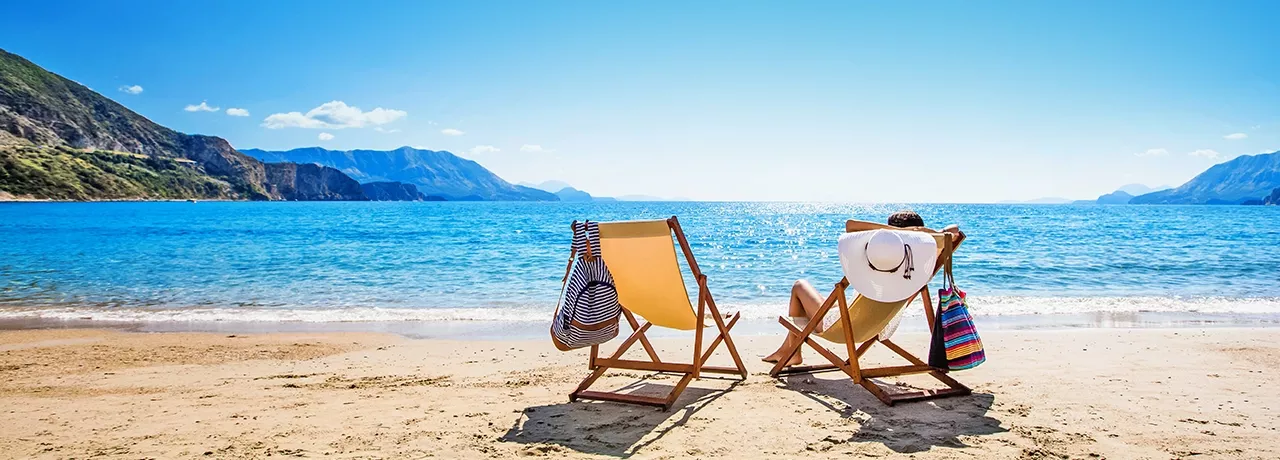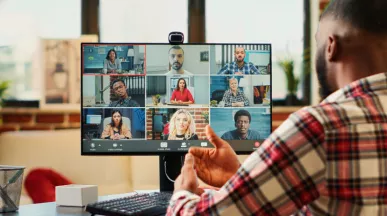How to Be More Productive in the Office Take a Vacation

By Theresa Harkins-Schulz
It may seem counterintuitive for today’s pressurized employees, but one of the best ways to be happier and more productive in the office is to escape from it. Vacation, with all the benefits it brings staff and employers alike, is finally being recognized as a valuable asset for any company. Whether it’s a week on the beach in Mexico, hiking in the Alps or a trip to Las Vegas, research shows that getting away from it all is good for business.
More Vacation Makes Staff More Productive
An internal study carried out by audit firm EY in the U.S. and Canada found that for every 10 hours of vacation taken by an employee, their performance review ratings rose by 8%. The study also revealed that employee retention increased in line with vacation time, with every 40 hours of holiday prompting staff to stay eight months longer with the company. A similar message emerges from studies at the macroeconomic level. Mexico had the lowest productivity among the 38 countries of the OECD in 2015—and the lowest paid vacation entitlement, which starts at just six days.
Taking Out the Stress
For employees, vacation is an opportunity to recharge their batteries and to reset a work-life balance that is often weighted toward the employer. The stress of the office workload can lead to poor decision-making, a negative attitude that can also affect colleagues, poor mental and physical health, and, of course, the classic case of employee burnout. Stress and its accompanying fatigue also increase risks for workplace accidents, absenteeism and lack of engagement. With stress estimated to cost the U.S. economy $300 billion a year, a vacation can be a powerful antidote to these pressures.
Boosting Creativity With Foreign Travel
What’s more, a break can restore people’s enthusiasm and creativity, bringing real value to the organization in terms of engagement and new ideas. A holiday abroad can also offer more than just rest and recuperation. A study by researchers from the University of Illinois and Northwestern University in the U.S., INSEAD in France and Singapore Management University found that exposure to other cultures actually enhances creativity. The extent to which people had experienced foreign cultures “was positively related to both creative performance (insight learning, remote association and idea generation) and creativity-supporting cognitive processes (retrieval of unconventional knowledge, recruitment of ideas from unfamiliar cultures for creative idea expansion).”
A Challenge for Small and Medium-size Enterprises
Far from being the preserve of major corporations, all these vacation benefits are available to small and medium-size enterprises — as the experiences of Simpliflying and Sagmeister & Walsh make clear (see below). And yet, many small and medium-size enterprises are missing out. In the U.K., more than half of small and medium-size enterprise leaders took off five days or less in 2016, with more than a fifth taking no holiday at all. A study in New Zealand found that 13% of small and medium-size enterprise leaders had taken no vacation in the previous 12 months. The risk with such attitudes is that they create a domino effect, where staff feel they cannot take their holiday entitlement either.
Vacation Policies That Really Deliver
To tackle the problem, managers of small and medium-size enterprises and large companies have various options, with leading by example being at the top of the list. Introducing a “use it or lose it” policy, albeit with some flexibility, can also help. One of South America’s best-known success stories, the transformation of Brazil’s SEMCO from a $4 million firm in 1982 to $212 million in 2003, followed an HR approach that included mandatory vacation. In his bestseller Maverick, CEO Ricardo Semler wrote that “you should all take your 30 days of vacation every year. It’s vital for your health and the company’s welfare. No excuse is good enough for accumulating vacation days for later.” For an employee in any company, the process of booking a vacation with a line manager can also be made easier with the provision of HR software, rather than paper forms.
Improving the Work-Life Balance
To complement these approaches, employers should also look to tackle the underlying challenges in today’s workplace, such as stress and work-life balance. Wellness programs can address these issues, helping employees to improve their engagement, performance and sense of well-being through a wide range of services and facilities. Inspirus and Sodexo share this objective of improving the quality of life at work. Our teams design wellness programs that enable companies to bring out the best of their staff and to realize the potential of their most valuable asset.
Interview 1
A sabbatical year to recharge the batteries
Stefan Sagmeister, a graphic designer and co-founder of Sagmeister & Walsh, boosts performance by closing his New York City design company for one year every seven years.
How does a year off fit with a working life?
We spend about the first 25 years of our lives learning, then another 40 working, and then about 15 years for retirement. I thought it might be helpful to cut off five of those retirement years and intersperse them between the working years. That's clearly enjoyable for myself. But probably more important is that the work that comes out of these years flows back into the company and society at large.
How does Sagmeister & Walsh benefit?
The first sabbatical worked really well for me. I really got close to design again. I had fun. Financially, seen over the long term, it was actually successful. Because of the improved quality, we could ask for higher prices. And probably most important, everything we've done in the seven years following the first sabbatical came out of thinking of that one single year.
What other examples would you point to?
Seven years and one sabbatical year is 12.5% of my time. 3M since the 1930s gives all its engineers 15% to pursue whatever they want. Scotch tape came out of this program, and Art Fry developed sticky (Post-it) notes. Many people think Ferran Adria is the best chef in the world with his restaurant north of Barcelona, El Bulli. He closes it five months a year to experiment with a full kitchen staff—and he has 2.2 million requests for reservations.
Interview 2
Compulsory vacation: The answer to employees who spend too long at the office?
In 2016, global aviation strategy company SimpliFlying made it compulsory for all 10 employees to take one week of leave every seven weeks. For CEO Shashank Nigam, the policy has been a success for employees and the company alike.
What was the thinking behind the policy?
The aim of this experiment was to take a break from heavy thinking, or heavy work, and find “space.” Of course, the leaves had to be staggered, but the key was the staff had to be completely cut off from work. There was just one simple rule: “Reply to an email and you wouldn’t be paid. React to a Slack message and you won’t be paid for that week.”
What were the results?
We had the managers of each team member rate themselves before and after the mandatory vacation. The results? Creativity went up 33%, happiness levels rose 25%, and productivity increased 13%. In some cases, returning team members were able to produce detailed standard operating procedure documents in a day as opposed to over two days.
How else did employees benefit?
We discovered our hidden talents, traveled often, spent time with our family and loved ones. Humans are multifaceted and to make a person do only one type of job or to ascertain his or her value based on the daily job is just not right. When we are given the freedom to explore our multiple talents, we blossom as individuals.





